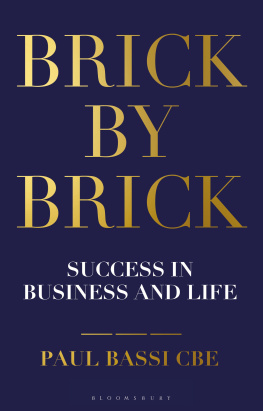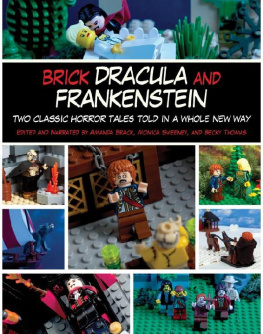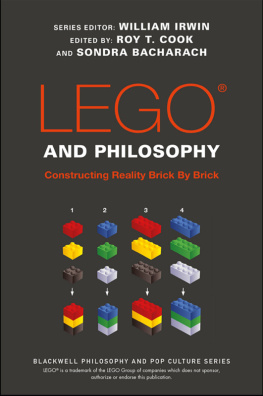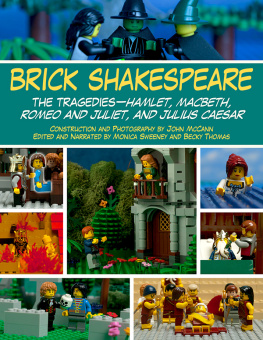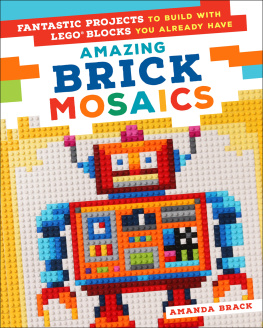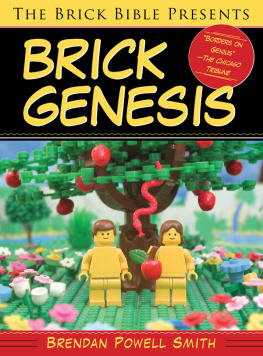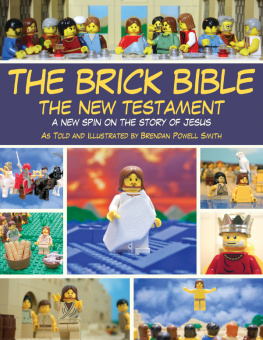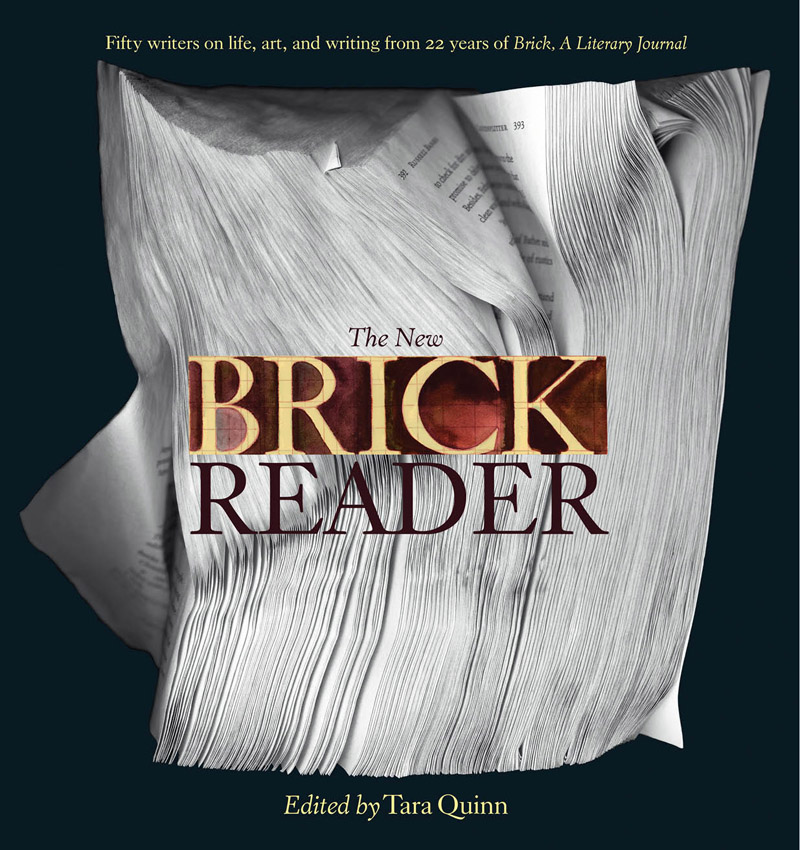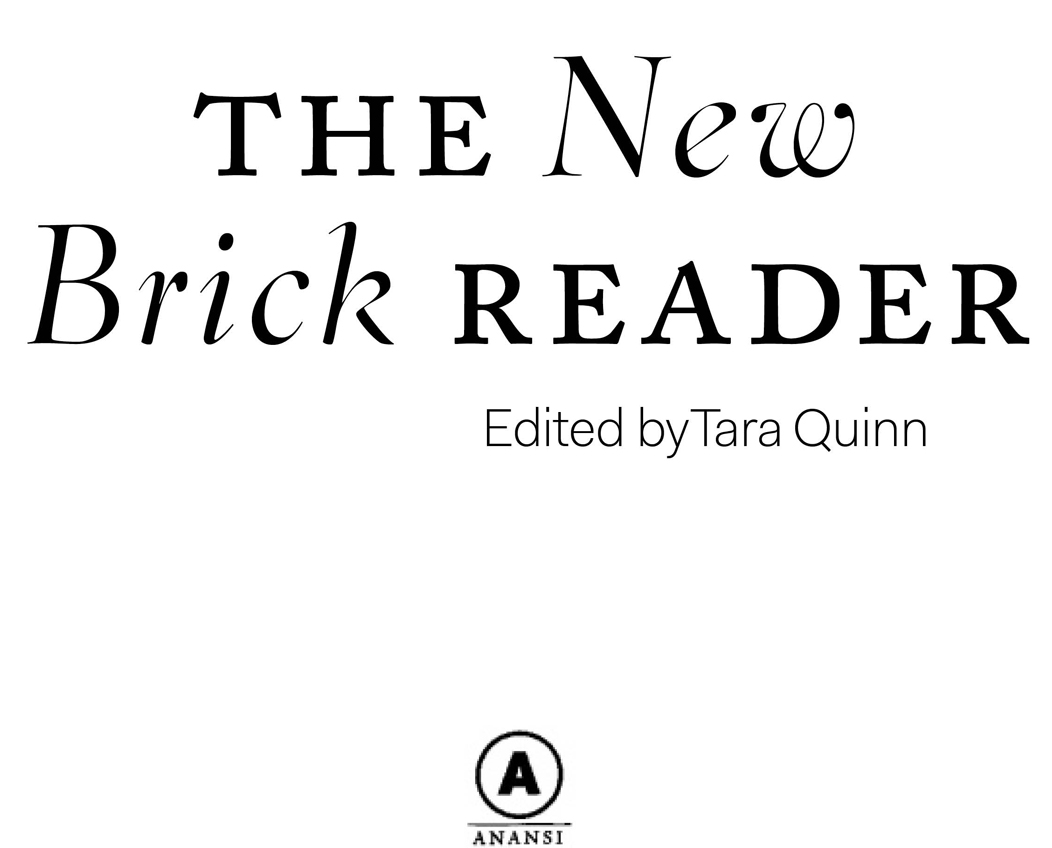Copyright 2013 by Brick, A Literary Journal
All rights reserved. No part of this publication may be reproduced or transmitted in any form or by any means, electronic or mechanical, including photocopying, recording, or any information storage and retrieval system, without permission in writing from the publisher.
Distribution of this electronic edition via the Internet or any other means without the permission of the publisher is illegal. Please do not participate in electronic piracy of copyrighted material; purchase only authorized electronic editions. We appreciate your support of the authors rights.
This edition published in 2013 by
House of Anansi Press Inc.
110 Spadina Avenue, Suite 801
Toronto, ON, M 5 V 2 K 4
Tel. 416-363-4343
Fax 416-363-1017
www.houseofanansi.com
Library and Archives Canada Cataloguing in Publication
The new Brick reader / edited by Tara Quinn.
A collection of literary essays, interviews, memoirs, travelogues,
belles lettres, and unusual musings previously published in Brick.
Issued in print and electronic formats.
ISBN 978-1-77089-408-2 (pbk.). ISBN 978-1-77089-409-9 (html)
1. Canadian literature (English) 20th century.
2. Canadian literature (English) 21st century.
3. Authors, Canadian (English) 20th century Anecdotes.
4. Authors, Canadian (English) 21st century--Anecdotes.
5. Authors, Canadian (English) Interviews.
I. Quinn, Tara, 1980, editor of compilation
PS8251.N49 2013 C810.8'0054 C2013-903779-9 C2013-903780-2
Library of Congress Control Number: 2013941770
Cover design: Brian Morgan
We acknowledge for their financial support of our publishing program the Canada Council for the Arts, the Ontario Arts Council, and the Government of Canada through the Canada Book Fund.
CONTENTS
Michael Ondaatje ~ Introduction
Jeffrey Eugenides ~ The Lover of the Hummingbird: Remembering John Hawkes
Elizabeth Hay ~ The Writers Life
James Wood ~ An Interview with W. G. Sebald
Robert Fyfe ~ Bargains with the land
Jane Rule ~ I want to speak ill of the dead
Alistair MacLeod ~ The Writings of Hugh MacLennan
Michael Helm ~ Garry Winogrands Moment of Exposure
Proulx, Brand, Creeley, Rushdie, Wright, Atwood, Gibson, Banks ~ What Id be if I were not a writer
Peter Harcourt ~ Sites of Citation
Jim Harrison ~ Dont Go Out Over Your Head
Helen Garner ~ Antarctic Voyage
Michael Ondaatje ~ A Conversation with David Malouf
Melora Wolff ~ Fall of the Winter Palace
Roo Borson ~ Persimmons
Albert Nussbaum ~ An inside look at Donald Westlake
Jonathan Lethem ~ Yoked in Gowanus
Tim Lilburn ~ Getting into the Cabri Lake Area
Reza Baraheni ~ A Minor Mistake in the Evin Prison
Robert Creeley ~ Fielding Dawson Remembered: Fee-Fi-Fo-Fum
Michelle Orange ~ An Interview with John Orange, on Completing the Ceiling of the Sistine Chapel, a Jigsaw Puzzle
Paule Anglim ~ An Interview with Gabrielle Buffet-Picabia
Fanny Howe ~ Au Hasard Suicide
A. L. Kennedy ~ Swimming Pool
Semi Chellas ~ Some notes on infinity
Don DeLillo ~ Counterpoint: Three Movies, a Book, and an Old Photograph
Alastair Bland ~ How Scientists Party
Dionne Brand ~ Manos de Piedra
Esta Spalding ~ An Interview with David Sedaris
John Berger ~ The chorus is in our heads or, Pier Paolo Pasolini
Sarmishta Subramanian ~ Why I ride a bicycle
Clark Blaise ~ A Delayed Disclosure
Clayton Ruby ~ A visit from Jean Genet
Robert Hass ~ Tomas Transtrmer: A Tribute
George Toles ~ Silent Cinema: An Aesthetic Call to Arms
Stphan Bureau ~ An Interview with Mavis Gallant
Roberto Bolao & Forrest Gander ~ Two Encounters with Nicanor Parra
Craig Howes ~ Leon Edel and G. Bernard Shaw
Colm Tibn ~ Music
Don Paterson ~ Phantom
W. S. Merwin ~ Her Own Words
Sean Michaels ~ The Lizard, the Catacombs, and the Clock: The Story of Pariss Most Secret Underground Society
Charles Foran ~ The Here and Now
Eleanor Wachtel ~ In Conversation with Anne Carson
R. Chandran Madhu & Colum McCann ~ An Ode to Curling
Tara Quinn ~ Afterword
Contributors
Credits
INTRODUCTION
Reading Time: four minutes
B RICK has always been a magazine cobbled together by writers who seem to have a slanted perspective of the literary world around them. We have published articles where writers celebrate other writers Robert Hass on Tomas Transtrmer, John Berger on Pier Paolo Pasolini, Roberto Bolao on Nicanor Parra, Don DeLillo on Thelonious Monk and Glenn Gould. But we have also published somewhat strange pieces: one on fishing by Graham Swift, one on writers who wrestle, and a piece by a well-known Toronto lawyer whose shoes were stolen by Jean Genet when he stayed at the lawyers house (what did he expect?). Over the years we have run interviews with Kazuo Ishiguro, W. G. Sebald, Anne Carson, Zadie Smith, and Mavis Gallant, as well as many others. William Gaddis has mused on Herman Melvilles impressions of Cologne Cathedral, Patricia Rozema has written about what it was like to direct Harold Pinter in a film, Jeffrey Eugenides remembered John Hawkes as a teacher, a prisoner in San Quentin interviewed the mystery writer Donald Westlake, and the son of a scientist wrote a personal memory about How Scientists Party. It is as if anything around us can be somehow gathered and carried in the canoe or the split-pea shell that is Brick, A Literary Journal.
To some of us it feels that Brick began in the Middle Ages. It was started by Jean McKay and Stan Dragland in 1977, and the magazine has gone on from there in various shapes and sizes in the hands of three other publishers: Linda Spalding, Michael Redhill, and Nadia Szilvassy. But throughout all these years more than thirty-five now its editors have always been writers. Right now there is an editorial board of six. Some prefer to act as scouts for what might be out there a conversation with a writer, or some idea that can perhaps be encouraged into an essay. Some prefer the more triage-like role of judging what is really good. But most of all we are enthusiasts for what is interesting to us first of all, and then hopefully to our readers.
One of our consistent desires is that writers from elsewhere rub up against writers from Canada, and we want established writers to meet with newer writers in our pages. So we invite artists and writers from all over the world as well as welcome the strange and random pieces that come over the transom one man whose job it was to destroy books in a library found a book of poetry there, read it, admired it, and promptly reviewed it for us ( Brick 90). We have had recipes based on road kill ( Brick 77), a piece on a strange underground cult in Paris ( Brick 85), and one on the souls of dogs ( Brick 80). In another era we would have asked the author of Moby Dick for a chowder recipe, or Henry James for a monthly list of his dinner invitations, or Dorothy Wordsworth for her recommended map of rural walks.
Sometimes we ask a range of writers to deal with one of those essential questions, such as What would you have been if you were not a writer? (A dog, said Robert Creeley; A rock guitarist, said Ian McEwan; An actor, said Edmund White; Dead, said Russell Banks.) And in a recent issue we asked writers and artists about their favourite endings in novels. Of course there are internal battles within the editorial board. I have pushed for years for the magazine to be printed on pink paper like the Financial Times , and for all of our articles to have a line at the start that gives the approximate reading time of the piece, as magazines did in 1950s England, just so that we could reprint Yeatss Sailing to Byzantium and list the reading time as somewhere between seventeen seconds and twenty-five minutes. I never was able to convince the others. The final selection can also lead to fights. Even for this anthology, many of the editors wanted Helen Garners wilder article on experiencing a high colonic cleanse as opposed to her more reasonable piece on an Antarctic journey.




